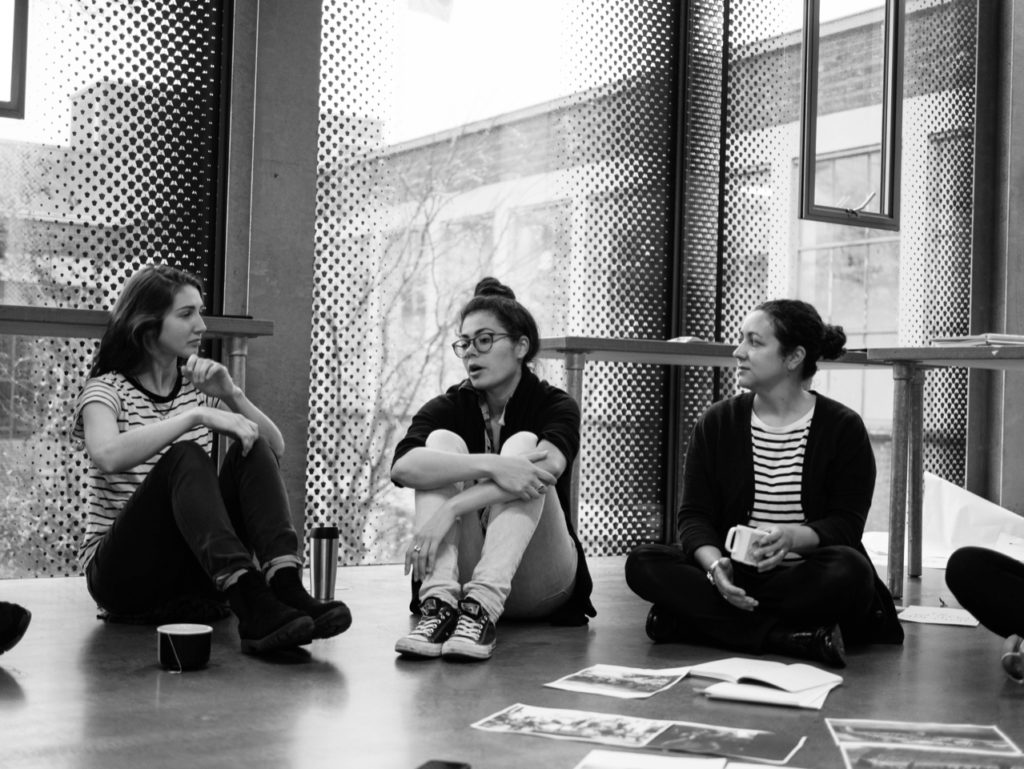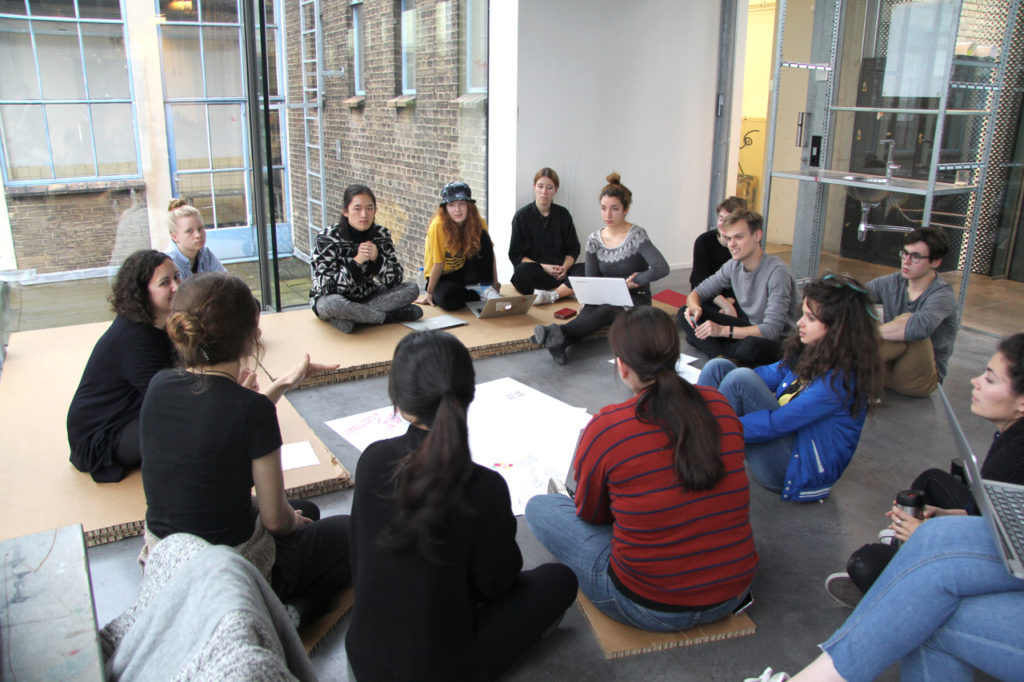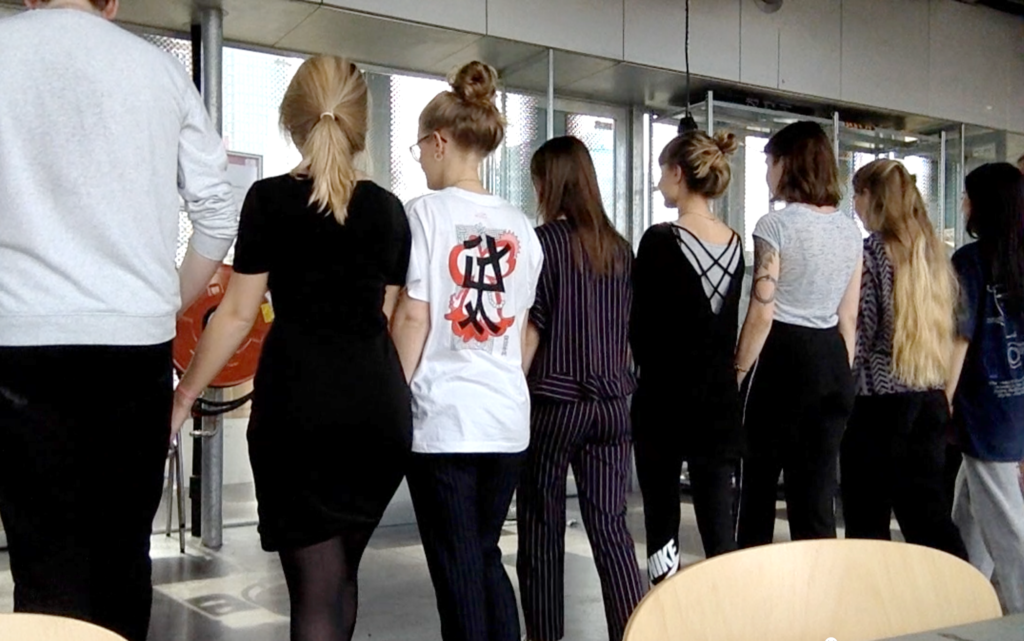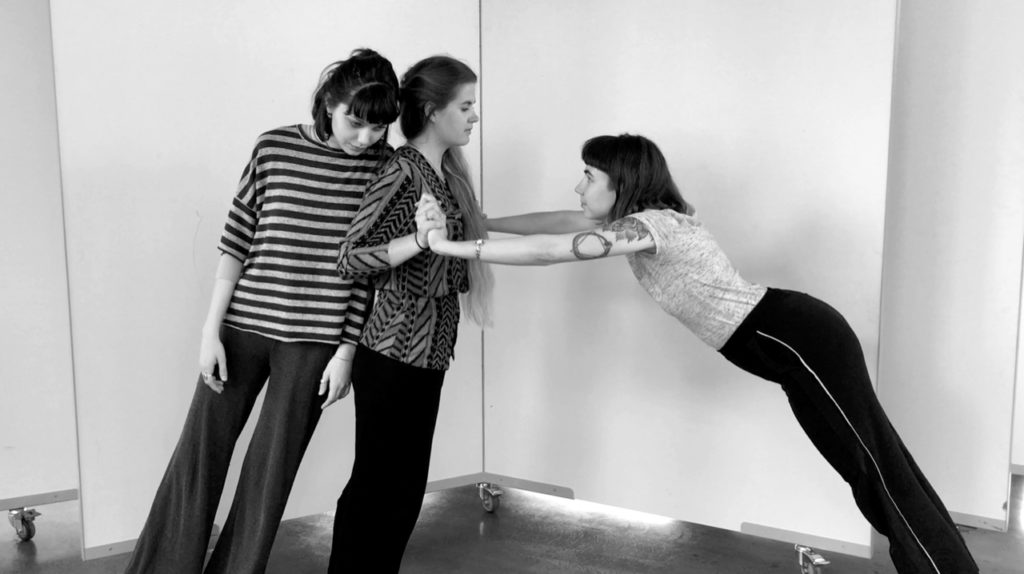I proposed to investigate the potential of space as a pedagogic tool, especially in the graphic design classroom. Within this context, ‘space’ should be understood not only as the physical space of the classroom but instead as a broad and overarching concept: the space within typography, the space one occupies, the space of the institution, or the social and political spaces that emerge through daily interaction.
The research — Counterspace: Classroom Space as a Pedagogic Tool to Share Authority and to Empower (Design) Students — took place between September 2016 and December 2018. The practical part was conducted in my Graphic Design classes with the first year students at the Royal Academy of Arts, The Hague (KABK). The project was part of the Master Education in Arts at the Piet Zwart Institute in Rotterdam.
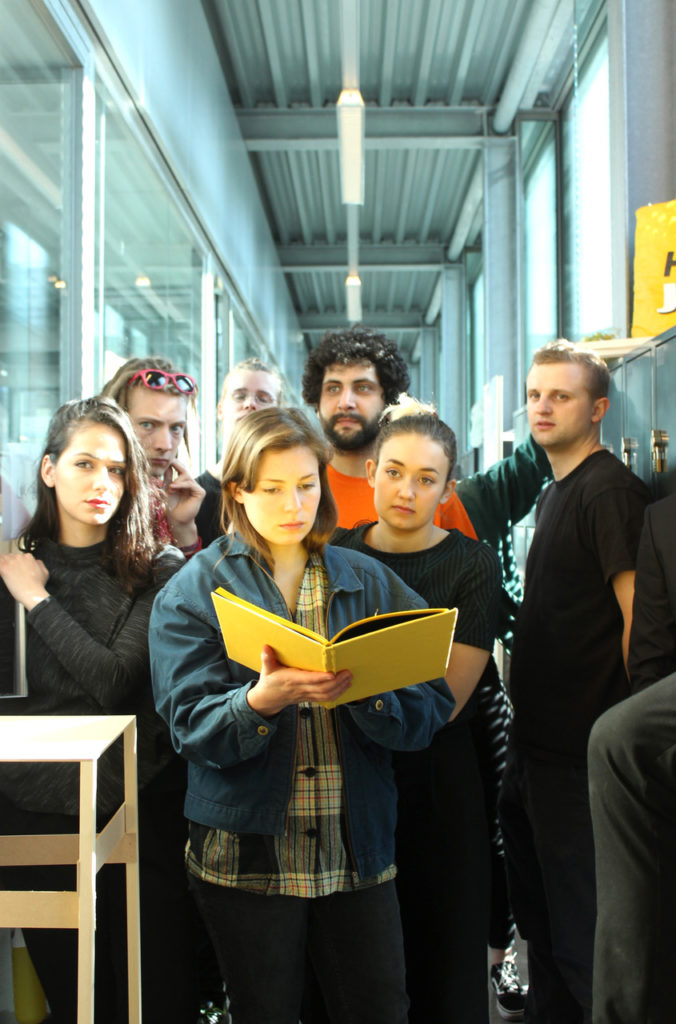
Scholten, J. (2017), Students taking over the corridors. Part of the section: Pedagogic practices and strategies, ENLARGE THE CLASSROOM: Take over the corridors.
We do this to perceive and use space differently and extend the borders of the classroom, to facilitate random encounters.
Acknowledging that space is never neutral, I question institutionalised and normative behaviours in the classroom and higher education by subverting my position as a teacher. How can we change this rigid perception and experience of space? I propose a multi-definition of space as a lens to my theoretical and practical investigation: Open Space, Informal Space and Other Space. These definitions open new possibilities for interaction within the classroom and new ways to relate to authority. From here I formulated strategies to empower students in their position and hopefully bring these alternative ways of behaving also outside the classroom.
Looking at and reflecting on historical art and design education settings, I linked their pedagogic approaches with the theory of critical and feminist pedagogy. I then situated these practices within the politics behind education. This reflection helped position my practice in the legacies of politically and critically oriented art education projects – a legacy especially productive in the graphic design classroom. After all, visual communication is also not a neutral, objective or universal language and it is crucial to address its politics.
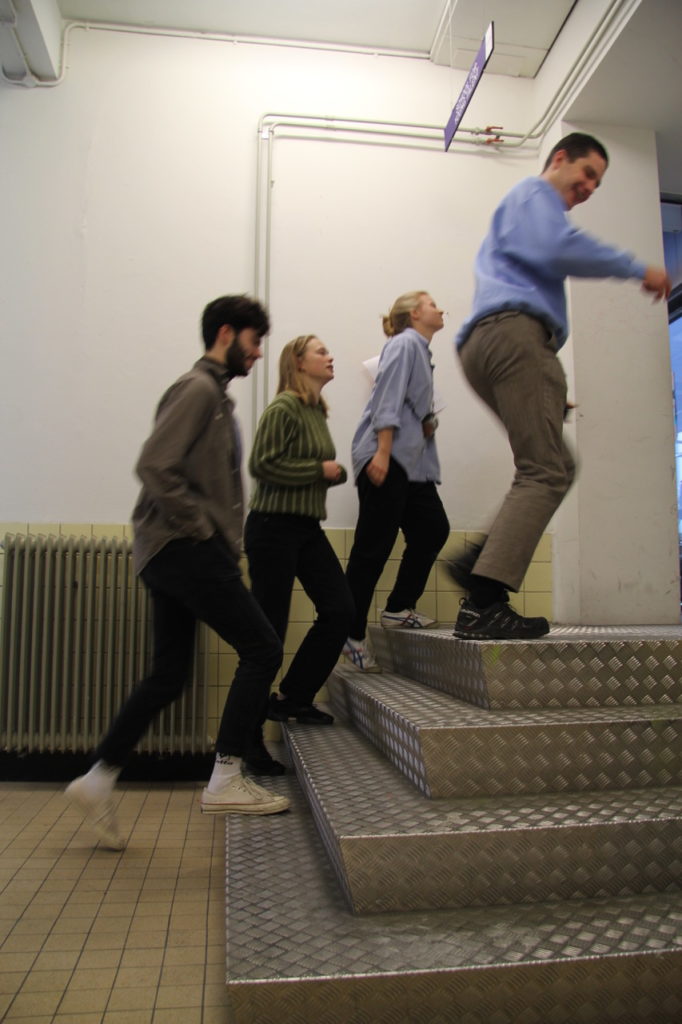
Pärnänen, K. (2017) Day two, informal group: take a break and go for a walk initiative, students class 1A 2016/17, KABK.
I put the theory into practice by devising a set of pedagogic practices and strategies that are explained and examined in my paper. I initiated an investigation into the dynamic between teaching and learning that questions the dichotomy between teacher and student to share my authority. With a series of actions and workshops, I enacted and activated the collective that we form in the classroom. The education project also situates this research within the contemporary graphic design field and the design education context. It also offers strategies for teachers and students to reflect and resituate themselves within the socio-economic space of design.
The complete thesis can be downloaded here.
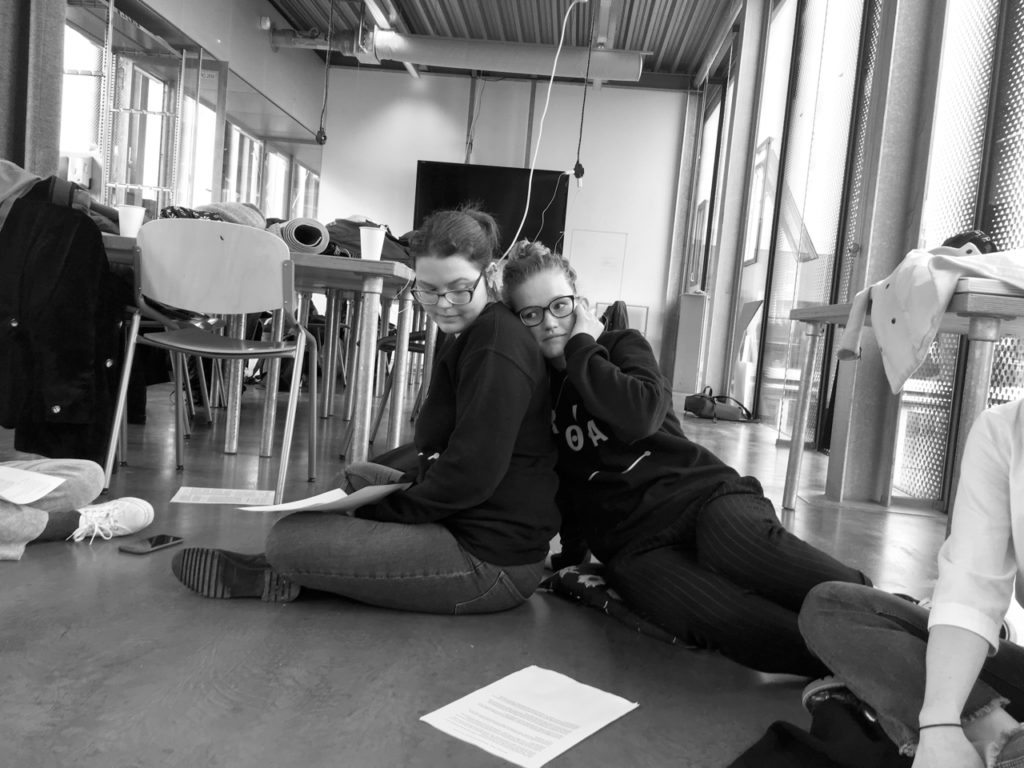
Scaglia, V. (2018) Listening Workshop with Viki Zioga. Vibration exercise, students class 1B 2017/18, KABK.
